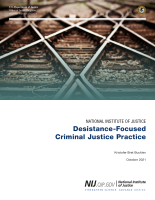Offenses
Evaluating Aerial Systems for Crime-Scene Reconstruction
New drone-mounted remote sensing technologies could complement conventional ground-based laser scanning in efficiently recreating crime scenes for forensic analysis.
A Natural Experiment to Test the Effect of Sanction Certainty and Celerity on Substance-Impaired Driving: North Dakota's 24/7 Sobriety Program
Peer Delinquency among Digital Natives: The Cyber Context as a Source of Peer Influence
How Police Policies and Practices Impact Successful Crime Investigation: Factors That Enable Police Departments to "Clear" Crimes
A Theory-Driven Algorithm for Real-Time Crime Hot Spot Forecasting
The Influence of Scope, Frames, and Extreme Willingness to Pay Responses on Cost of Crime Estimates
Evaluation of plant seed DNA and botanical evidence for potential forensic applications
Examining Equity in State Victim Compensation Programs: A Multilevel Analysis
Who is more violent in extremist groups? A comparison of leaders and followers
Desistance-Focused Criminal Justice Practice (Executive Summary)
NIJ Funded Research on Firearms Violence in Urban Cities: Advancing Scientific Evidence to Inform Practice
Landscape Study of Digital Tools to Identify, Capture, and Analyze Digital Evidence in Technology-Facilitated Abuse Cases
Trauma and Coping Mechanisms Exhibited by Forensic Science Practitioners: A Literature Review
Evaluating Aerial Systems for Crime-Scene Reconstruction
Just Science Podcast: Just Crossover Offending
Juvenile Court Statistics, 2019
Desistance from Crime: Implications for Research, Policy, and Practice
Why do people stop their involvement in crime? What factors help shape this process? How can policy and practice improve individuals’ chances of ending their criminal behavior?
See the YouTube Terms of Service and Google Privacy Policy
In NIJ’s new publication Desistance From Crime: Implications for Research, Policy, and Practice, experts explore these and other...




